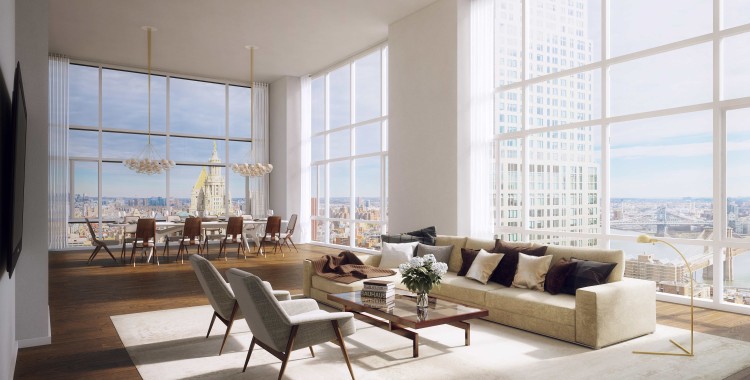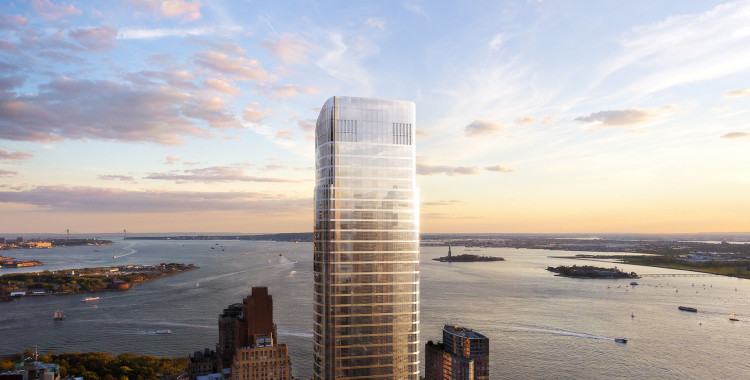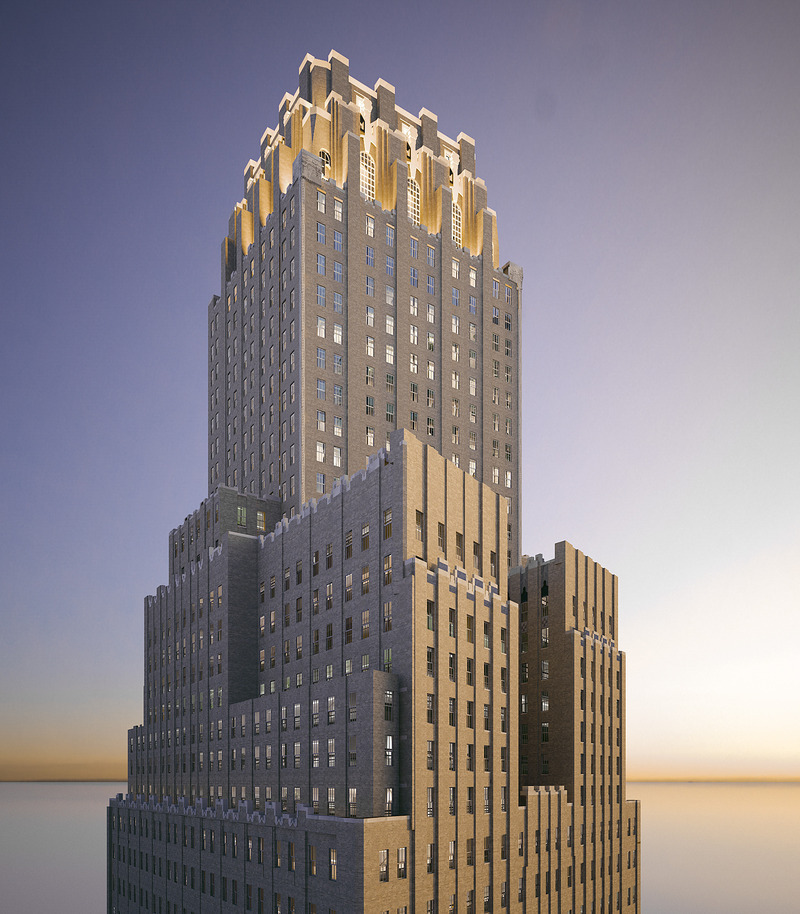
the {new new york} life, lower manhattan
To see the New New York Lower Manhattan has been reborn be in the Iconic Fashion Magazine VOGUE, February 2015 issue is exciting. The long awaited resurgence of lower Manhattan is finally here. When real estate investors ask us where should I invest? Lower Manhattan is a no brainer.
Lower Manhattan has been radically re-imagined and rebuilt by Visionaries such as Larry Silverstein. Here is the historical happenings of the development in NYC when Battery Park City was a landfill to where 20 Years ago there was no such Tribeca community as there is today. We have come a long way from 9/11 and only the best is yet to come!
As VOGUE has given us a fantastic read on Conde Naste becoming the new fashion hub of lower manhattan and enamored with new residential new development, new hotels, and best of the best restaurants. We are also sharing our exciting experiences such as having the opportunity to bring our investors to the 77th floor of the Four Seasons, 30 Park Place and meeting visionaries Larry Silverstein and Robert A.M. Stern. Also showcasing the hottest real estate investments that are changing the Lower Manhattan skyline such as 30 Park Place, the Beekman, 101 Barclay, 50 West and much more.
The rebirth of Lower Manhattan has created more jobs, more opportunities for growth and it’s exilirating to be part of this amazing journey.
Lower Manhattan has been radically re-imangined and rebuilt

With world-class architecture and an influx of culture and nightlife, there’s no where better to showcase the best of the New York collections?
Late on a Thursday in early November, a team of movers hovered over the stylists and market editors and accessories people and everyone else at Vogue’s offices on Forty-second Street in Times Square, as this 122-year-old fashion magazine was in the final stages of being squeezed into hundreds of small plastic bins. Then, on the gorgeous fall Monday that followed, the team showed up for work about four miles south, on the twenty-fifth floor of the tallest building in the Western Hemisphere—also known as 1 World Trade Center, or 1 WTC for short.
What was once a neighborhood that was a little behind the rest of New York—in terms of development and culture and, certainly, after-dark vibrancy—has been reborn as a thriving, multipurpose, 24-hour neighborhood, a symbol for many people of a city’s post-9/11 rebirth, with the new tower an exclamation point on the idea. “It makes the New York City skyline whole again,”
If you turned up in the new building on that first morning and wandered around as the staff hit the ground running, you immediately noticed two things: First, you saw grown men and women participating in the wide range of human emotions that are experienced when people move from one place to another, from small cries of glee to moments of confusion to worse. But you also saw a compass rose of New York City views—a kaleidoscope that stars a lower Manhattan that’s been radically reimagined and rebuilt.
What was once a neighborhood that was a little behind the rest of New York—in terms of development and culture and, certainly, after-dark vibrancy—has been reborn as a thriving, multipurpose, 24-hour neighborhood, a symbol for many people of a city’s post-9/11 rebirth, with the new tower an exclamation point on the idea. “It makes the New York City skyline whole again,” says Patrick Foye, the executive director of the Port Authority of New York and New Jersey, which owns and manages what has become one of the most high-profile construction sites in the world. But the tower is just the beginning—or so thinks Hugh Hardy, founding partner of H3 Hardy Collaboration Architecture. Hardy, who was an essential part of the transformation of Bryant Park and Theatre Row during midtown’s last revitalization, is about to go to work in lower Manhattan—literally. Though Hardy spent more than 45 years in the Flatiron District, his firm is moving to Broad Street, near Wall. Development, after all, needs an influx of people to make it actually work, which is where H3—and Vogue, along with the rest of its parent company, Condé Nast—comes in. “Lower Manhattan is a new community,” he says, “and I think that’s very exciting.” Robert Sullivan –
Thirty billion dollars have been invested in one square mile,” says Jessica Lappin, the president of the Alliance for Downtown New York,
The view from the twenty-fifth floor takes in all the wondrous new megaprojects: the National September 11 Memorial plaza (designed by Michael Arad and Peter Walker) and Museum Pavilion (from the Snøhetta architectural firm), and the Port Authority’s adjacent World Trade Center Transportation Hub (designed by the Spanish neo-Futurist Santiago Calatrava), which will connect via an underground passageway to the new Fulton Center—the atrium of which, up close, looks like a fabric made of sky. And of course you can spot other recent arrivals to lower Manhattan: most notably, Frank Gehry’s deconstructivist residential tower at 8 Spruce Street, which eyeballs its older neighbor, Cass Gilbert’s landmark 1913 Woolworth Building, across City Hall Park.
Thirty billion dollars have been invested in one square mile,” says Jessica Lappin, the president of the Alliance for Downtown New York, and this investment has radiated out into lower Manhattan in general, where residents have returned in numbers not seen since George Washington moved out in 1790. What seems like a thousand new places have sprouted up in the reinvigorated neighborhood, including an influx of architectural offices and advertising and media and tech companies. To sustain them, restaurants from Keith McNally and Tom Colicchio are soon to debut at the Beekman, a refurbished 1883 landmark building reinvented as residential condos and a hotel (the notion being that the Beekman might become the Algonquin of Nassau Street—or the Royalton of Theatre Alley). Joël Robuchon is returning to New York with L’Atelier, while Le District will open 37,000 square feet of French marketplace. There’s another Eataly on the way, along with openings from Parm, Amada, Blue Ribbon Sushi, and Northern Tiger.
Almost 30 shops and restaurants have premiered in the last few months, and in the next year or so we can expect an additional 1.8 million square feet of retail space in the vicinity of the Fulton Center, the World Trade Center complex, and the grand Oculus of Calatrava’s hub—the kind of territory that might elsewhere make up a whole downtown. The massive Brookfield Place development will feature a Burberry and a Tory Burch, an Hermès and a Michael Kors; a four-floor Saks Fifth Avenue is also in the works nearby.
Calatrava’s weightless, light-filled structure is joyous even under construction
Too full and shopping bag–laden to make it home? Twenty hotels are open at this moment, with eighteen more planned by the end of next year, by which time, of course, you may already be living there. The ornate voussoirs on the gorgeous Corbin Building, once slated for demolition, will be given new life on Broadway, as will the living rooms of the great limestone tower that is 1 Wall Street. Any fears of office glut in the neighborhood have been at least mitigated by the speed with which old buildings are being converted to homes—the top 30 floors of the Woolworth Building, for example. “When the first baby carriages showed up on Wall Street, it was spectacular,” says Hardy. Now they’re everywhere—and there’s a new school in lower Manhattan being proposed.
Artists are noticing, too: I recently happened to be at an eminent gathering of them at 7 World Trade Center to celebrate the current issue of the art magazineEsopus, which includes Michael Arad’s sketches for his Twin Voids September 11 memorial. The painters Thomas Nozkowski and Leslie Wayne mingled with the likes of video artist Neil Goldberg and the singer Cassandra Jenkins, marveling at the phoenix of a neighborhood below. And then there are poets. “I’ve lived in Tribeca since the time when you could not beg people to visit you, and I stood on my balcony on 9/11,” says Lee Briccetti, the longtime executive director of Poets House. Its national treasure–size collection of poetry has since been moved to a gorgeous and contemplative space with views of the Hudson River as first Battery Park and now the World Trade Center area have taken off. “Bridges are needed/also new railroad stations,” writes the poet Wisława Szymborska in “End and Beginning,” which you could look up in Poets House’s open-to-all library. “Tatters turn into sleeves/for rolling up.”

The very history of New York over the course of the city’s nearly 400 years indicates just how dramatic a U-turn this redevelopment is. For starters, back in the seventeenth century, much of the neighborhood was underwater: 1 WTC is built on landfill moved to expand the island. The area south of this burned to the ground in 1776—but by the time of the Civil War, downtown was the place to be. The Astor House on City Hall Park was the city’s foremost luxury hotel, surrounded by museums, with such notable figures as Whitman and Poe and even Margaret Fuller wandering the nearby streets. Since that brief eighteenth- and nineteenth-century heyday, though, the history of New York City has largely been about watching entertainment, business, and media centers move uptown, leaving only Wall Street to hold up Wall Street; by night, the area became a ghost town. “Twenty years ago we had a goal to make this a place where people could live,” says Lappin. September 11, of course, only made a sluggish downtown economy worse. At last, things have turned. “Just after 9/11 we had 20,000 people here,” says Lappin. “Now there are over 60,000.”
Stepping out from the sun-draped glass of the 1 WTC tower, Vogue International Editor at Large Hamish Bowles joins me on move-in day to survey a bit of the neighborhood en route to lunch. Moving south, he and I pause to admire Jean Dubuffet’s four-story black-and-white sculpture Group of Four Trees (with Isamu Noguchi’s giant Red Cube and Louise Nevelson’s Shadows and Flags mere blocks away) before turning east to Hanover Square, where Hamish pauses to look into the Queen Elizabeth II September 11th Garden, developed from a plan by his friends Julian and Isabel Bannerman, the British landscape designers, and officially opened by the queen herself in 2010. Across the street, he inspects a menu outside Harry’s, an old-school bar and steak house in a nineteenth-century Renaissance-style palazzo with cameos in both The Bonfire of the Vanities and American Psycho. “This works,” he says. At a table bathed in river light, the fashion editor in the custom Douglas Hayward suit is surrounded by a sea of gray flannel, and you can’t help relishing the new resident among the old ones. “I love my new neighborhood,” he says when we eventually head back toward the office. “It’s exhilarating!”
As you enter the plaza to the immediate south of 1 WTC, you’re greeted by Arad and Walker’s powerful memorial—two square waterfalls within the boundaries of the old towers—as well as the smart and sensitive museum, with the enormous and seemingly weightless ribs of Calatrava’s station rising behind it all. It’s a joyous structure even under construction, both as light-filled and as significant to the city’s transportation needs as Grand Central or the old Penn Station. (One ends up wondering what it might have been like if it were even further over budget than it is already.) Calatrava has created the Grand Central that lower Manhattan never had—along with a spectacular central skylight and a ceiling that aligns with the sun each September 11 at exactly 10:28 a.m., the time of the second tower’s collapse.
As you walk past, you see the construction worker stepping back to photograph what are referred to as the wings of the Oculus: Calatrava based his design on the sketch of a dove being released. “All of my efforts have been in creating spaces,” says the architect in his Park Avenue studio. “It’s very much stuff of the nineteenth century—views, vistas, so you always know where you are. You are creating a link to the rest of the world. It’s the only way to proceed in terms of the city continuing to grow.”
Back on the twenty-fifth floor the Vogue staff is settling in, with a few editors pausing for a moment to take in the Hudson River framed in the windows. And if you’re like me, you feel a tug from the 102nd floor, part of the unfinished observation deck atop One World Trade Center. So you make some calls and, eventually, the work elevator opens on an under-construction hallway leading to vast plates of almost uninterrupted glass, which make the windows less like windows and more like large-scale Thomas Cole paintings. And when you look through them, you can see what most amazes the man who carried out the plan to build it. That man is Steven Plate, the director of construction on the sixteen-acre World Trade Center site.
“We’re building a city within a city,” says Plate, who used to have an office in one of the old World Trade Center towers. When you look down, you see that he’s not kidding. It took forever and cost even more, but as the evening moves in and lights come up, you can see that what was once a lonely place at night is hopping. “It’s very exciting here,” he says. “You take a step back, and you can see that we’re alive and open for business.”
Four Seasons 30 Park Place 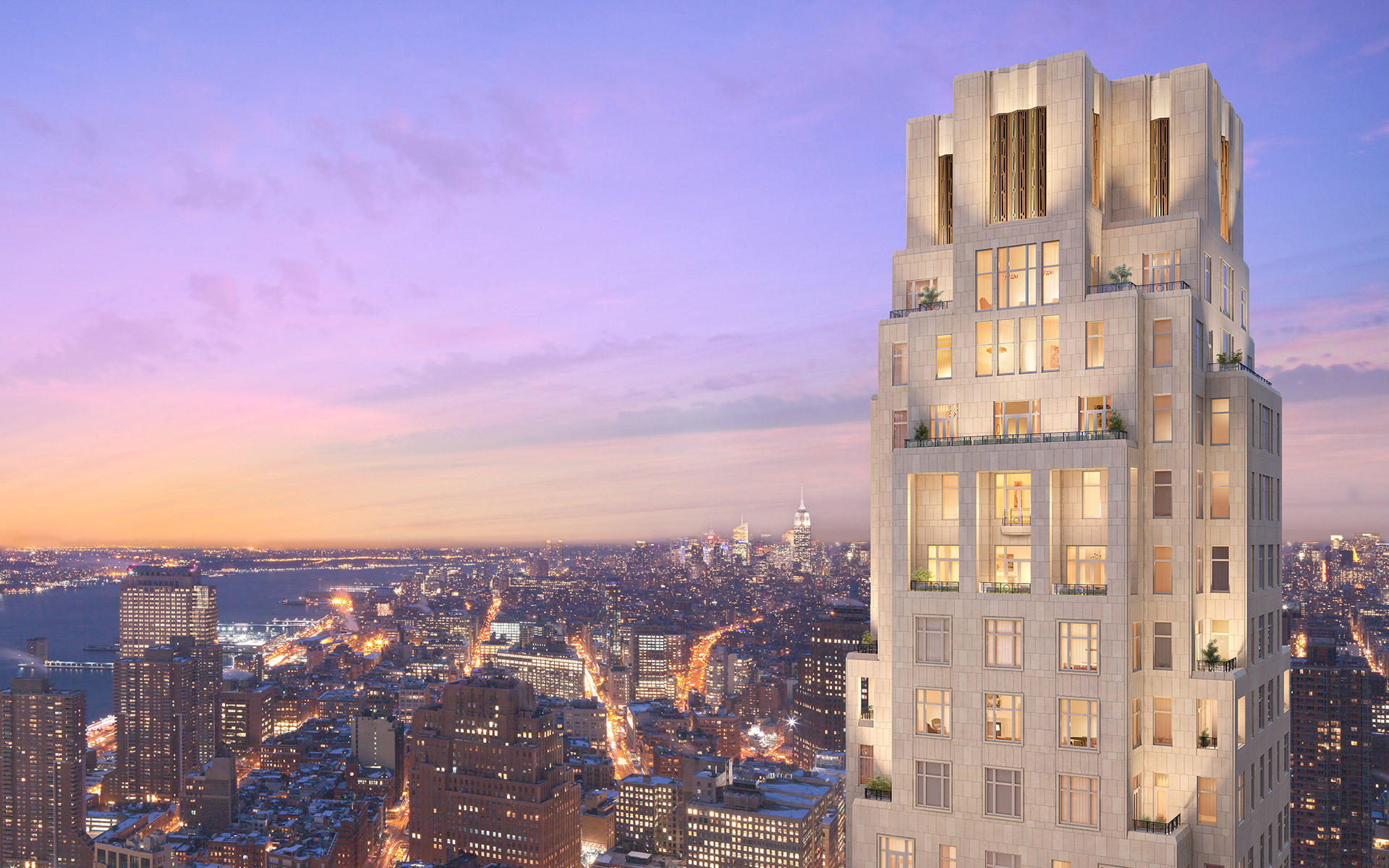
This building, designed by the renowned Robert A.M. Stern Architects, has an elegant limestone tower and combines a 175-room hotel with 157 luxury condominiums that will become an important landmark among the skyscrapers of Downtown New York.
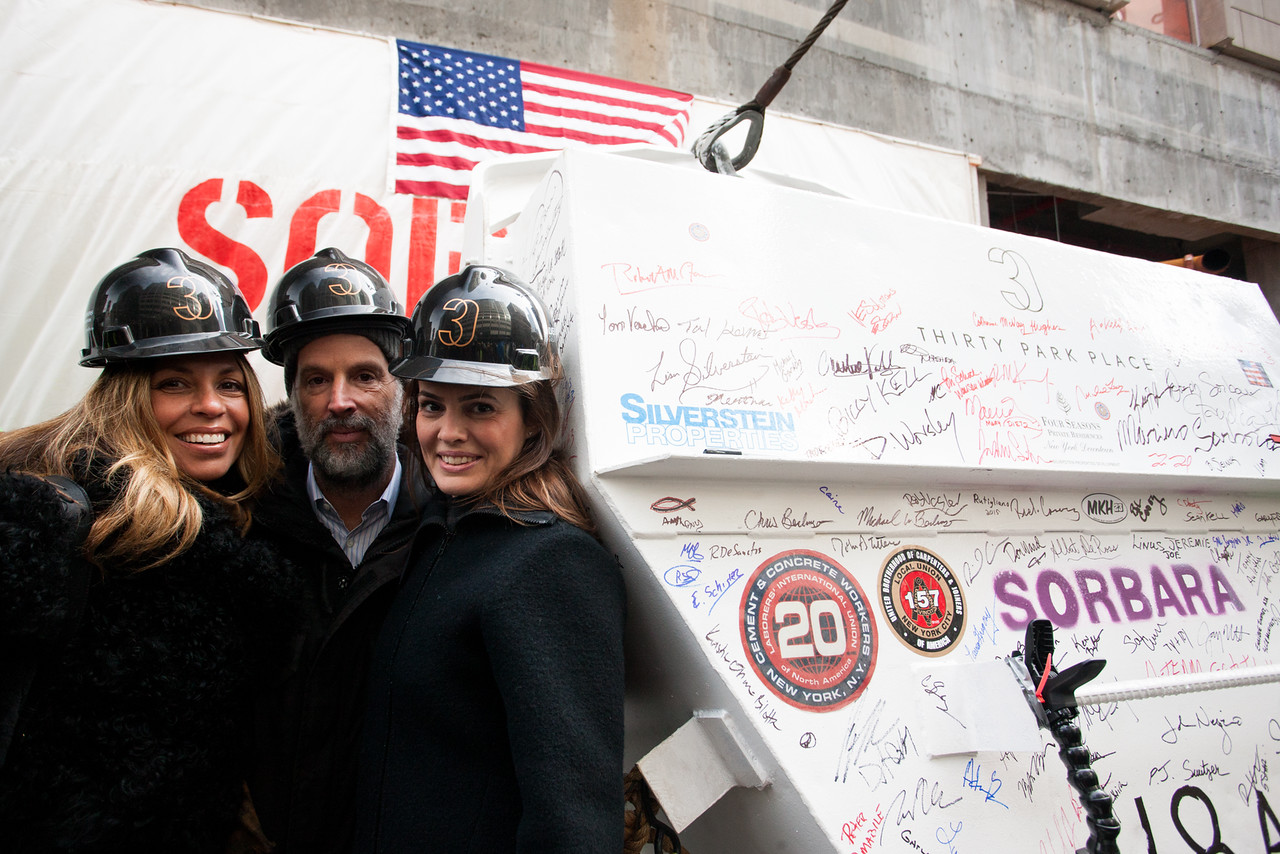
There will be A Four Seasons Hotel that will occupy the first 22 floors of the 80-story tower, which will also include a specialty restaurant. The remainder of the tower, which rises to a dramatic skyline profile of full-floor penthouses and setback terraces, will accommodate private residences as large as 6,500 square feet. The Residences also will be managed by Four Seasons.
Robert A.M. Stern at the Topping off of 30 Park Place
The Residences at 30 Park Place have their own separate entrance and lobby. Exclusive to the residents, amenities for the Private Residences are located between the Hotel and Residences and include a 75-ft heated indoor pool, fitness center, lounge area, and children’s room. A landscaped public plaza is included as well.
Larry Silverstein & Claudia Saez-Fromm
The Beekman
Between the majestic walls of one of New York’s most extraordinary landmark buildings, a new paradigm for downtown life has emerged.
Reflecting the rise of The New Downtown, The Beekman brings turn of the century and contemporary architecture side-by-side to give home to those seeking an authentic metropolitan experience. Through the prism of its fully restored, nine-story Victorian atrium, hotel guests and owners can traverse between the plush social spaces of its storied halls and the adjacent modern residential tower.
 A microcosm of the city destined to be the new epicenter of Lower Manhattan, The Beekman’s rich program offers outstanding restaurants, exclusive amenities and panoramic views of Manhattan’s most iconic landmarks, including the Brooklyn Bridge, the Statue of Liberty, the Woolworth Building, and the World Trade Center
A microcosm of the city destined to be the new epicenter of Lower Manhattan, The Beekman’s rich program offers outstanding restaurants, exclusive amenities and panoramic views of Manhattan’s most iconic landmarks, including the Brooklyn Bridge, the Statue of Liberty, the Woolworth Building, and the World Trade Center
The Whoolworth Tower Residences
Cass Gilbert, the original architect of the Woolworth Building, was the primary inspiration for The Office of Thierry W Despont’s landmark reinvention. Few architects have left as dramatic a mark on New York City as Gilbert. Trained at MIT in the principles of the Parisian École des Beaux-Arts, he was an early proponent of the American skyscraper. Frank W. Woolworth’s commission gave Gilbert the opportunity to develop his principles and ideals on a monumental scale.
The limited collection of thirty-four half floor, full floor, and penthouse condominium residences starts on the twenty-ninth floor. The residences are blessed with pre-war proportions that meet state-of-the-art construction with features that include ceiling heights elevated up to fifteen feet, custom Woolworth Building monogrammed door hardware and kitchen centerpieces, and multiple exposures offering spectacular bridge, river, park, and cityscape views.
50 West Street
At approximately 780 feet tall, views from 50 West Street’s curved glass windows are unparalleled.
New York Harbor, both the Hudson and East Rivers, the Statue of Liberty, and Ellis Island are all clearly visible. Internationally acclaimed architect Helmut Jahn, well known for his modern steel-and-glass structures, has designed one of the most striking new buildings in the city.
The 64-story tower boasts 191 residential condominiums, with expansive layouts ranging from one to five bedrooms, as well as an array of duplexes and double height living rooms throughout the tower. All interiors are designed and finished by Thomas Juul-Hansen, who has complemented Jahn’s steel and glass with exceptional warmth and elegance.
Four floors of the tower are devoted to state-of-the-art amenities: an immense Fitness Center, the beautifully-appointed Water Club, unique children’s amenities, and The Observatory at 50 West Street, a spectacular 64th floor outdoor entertaining space with seemingly infinite views of New York and beyond.
100 Barclay Street
Long-recognized as the crown jewel in the portfolio of “Architect of the Century” Ralph Walker, this 1927 masterpiece is being reintroduced as Tribeca’s most notable residential address.
Available for occupancy in 2015, 100 Barclay is offering one- to five-bedroom residences paired with over 40,000 square feet of indoor and outdoor amenity space. Situated in the heart of New York City’s premier lifestyle destination, 100 Barclay is steps away from Tribeca’s renowned restaurants and shops as well as the new Downtown including Hudson River Park and the highly anticipated retail, Brookfield Place and Westfield World Trade Center




